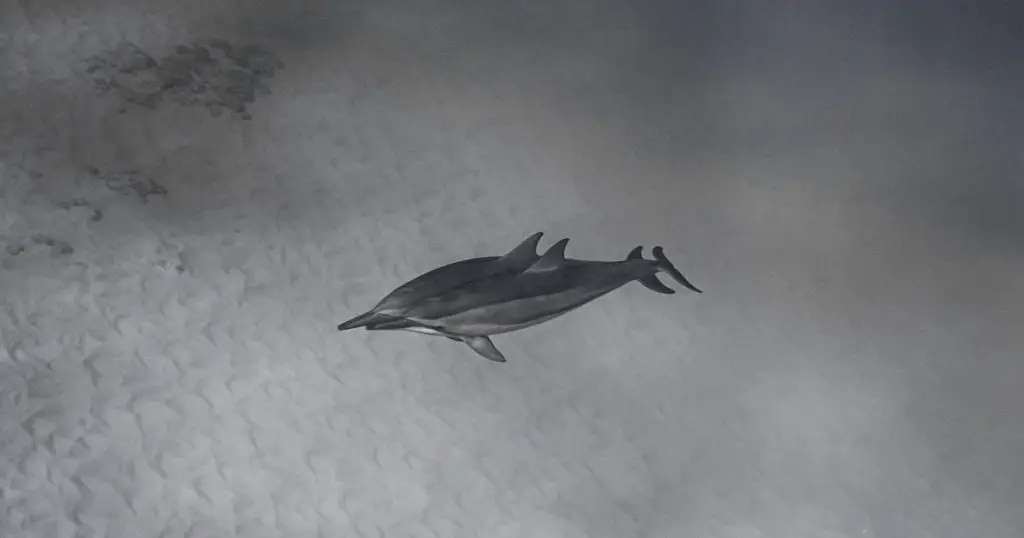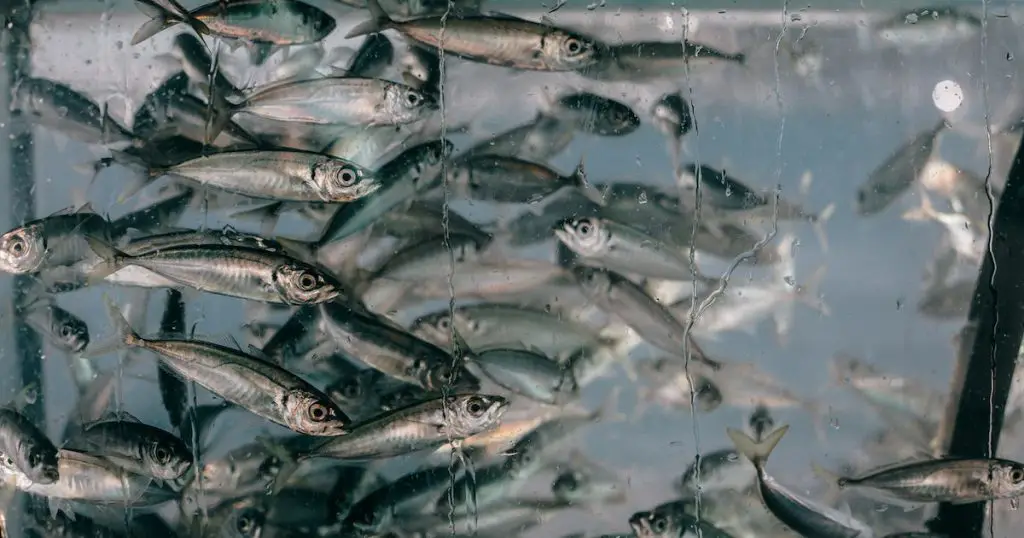Nestled within Arizona, Prescott’s natural beauty is not limited to its scenic landscapes alone. Its aquatic realms are equally compelling. Delving deep into the Fishing species found in Prescott’s water bodies unveils a rich tapestry of biodiversity, offering both recreational anglers and biologists myriad reasons to explore its waters.

This article embarks on a comprehensive journey into the heart of this aquatic world, touching upon each species that call Prescott’s water bodies home.
Overview of Prescott’s Water Bodies
Prescott, often revered for its picturesque landscapes, boasts a variety of water bodies that are both a visual delight and an angler’s dream. From serene lakes like Goldwater and Watson to meandering rivers and smaller ponds, these aquatic realms offer diverse habitats for an array of fish species.
Beyond recreation, they play a pivotal role in the area’s ecology, supporting life both in and around the waters. Each water body, with its unique characteristics, contributes to Prescott’s identity as a haven for nature enthusiasts and fishing aficionados alike.
Lakes and Reservoirs
Prescott’s lakes and reservoirs, such as the famous Watson and Goldwater Lakes, are idyllic spots for recreation and fishing. They harbor a significant number of fish species, thanks in part to their rich aquatic habitats.
These water bodies, with their serene ambiance and clear waters, have been attracting anglers from all over the state for generations. The stillness of these lakes provides an ideal environment for several species to thrive, setting the stage for memorable fishing experiences.
Rivers and Streams
The flowing rivers and streams of Prescott, like the Granite Creek, showcase a different facet of aquatic life. These constantly moving waters are home to species that prefer swift currents and rocky terrains.
The sound of water rushing over pebbles and the sight of fish darting amidst the stream’s flow have inspired many poet and nature lovers alike. Anglers often find rivers a challenging yet rewarding fishing ground, thanks to the diverse fish species that inhabit them.
Native Fish Species
Prescott’s water bodies are home to a myriad of native fish species, each playing a vital role in maintaining the aquatic ecosystem’s health and balance. From the small darters navigating the shallows to larger species patrolling deeper waters, these native fish are a testament to the region’s natural heritage.
They’ve evolved over millennia, perfectly adapted to their specific habitats. Protecting and celebrating these native species ensures that Prescott’s waters remain a vibrant and authentic reflection of the area’s rich ecological tapestry.
Sunfish Varieties
Sunfish, with their vibrant colors and distinct shapes, are among the most recognizable fish in Prescott’s waters.
Bluegill, with its deep blue and purple on its face and gill cover, is a favorite among novice and experienced anglers alike. These fish are often found in the shallows, especially around submerged structures like fallen trees or rock formations.

Their natural diet consists of insects, but they can’t resist a well-placed worm or small jig. According to the Arizona Game & Fish Department, Bluegills provide an excellent opportunity for catch-and-release fishing due to their robust nature and prolific numbers.
Longear Sunfish are an absolute treat to the eyes. They flaunt radiant colors and a distinctive long ear flap. Usually found in clearer waters, they prefer habitats with gravel or sandy bottoms. Insect larvae, small crustaceans, and even smaller fish constitute their primary diet. For those keen on understanding their habitats better, Freshwater Fish of America offers an exhaustive guide.
Catfish Species
Prescott’s water bodies are also home to the enigmatic catfish, renowned for their whisker-like barbels and nocturnal habits.
The Channel Catfish stands out with its sleek body and spotted appearance. Preferring deeper waters, these fish are often caught during the twilight hours. Their omnivorous diet makes them less finicky about baits, making them a popular target for night-time anglers. A deeper dive into their behavior can be found on Catfish Edge, a dedicated platform for catfish enthusiasts.
The Flathead Catfish, often referred to as the “king of the river,” is known for its massive size and strength. They prefer live bait, especially smaller fish. Hunting them requires patience, but the thrill of catching a big one is incomparable. In-Fisherman provides ample tips and tactics for those pursuing this mighty fish.
Trout Varieties
Prescott’s colder waters, especially those at higher elevations, are the playground for various trout species.
Rainbow Trout, with its shimmering colors, is a favorite among fly fishermen. They prefer cooler waters and are often found near the surface, especially during hatches. Their acrobatic fights and beautiful appearance make them a prized catch. For budding anglers, resources like Trout Unlimited can be invaluable in understanding these fish better.
Brown Trout, a bit more elusive than its rainbow counterpart, adds to the allure of Prescott’s water bodies. Their preference for staying near the bottom and their wariness make them a challenge for anglers. However, with the right tactics and patience, they are an absolute joy to catch. Seasoned anglers often refer to Fly Fisherman for in-depth insights into their behavior.
Introduced and Stocked Fish Species
Within Prescott’s waters, alongside native species, swim fish that have been introduced or stocked to enhance recreational fishing opportunities. These species, often chosen for their popularity among anglers, bring added diversity to the aquatic landscape.
While they provide enriched fishing experiences, careful management ensures they coexist without outcompeting or threatening the native species. Their presence underscores the balance between enhancing recreational pursuits and maintaining ecological harmony.
Bass Species
The word ‘bass’ brings a twinkle to every angler’s eye. Their aggressive nature and thrilling fights make them a top target.
Largemouth Bass, with its wide mouth and aggressive behavior, is a favorite target for many. They often lurk around structures waiting to ambush their prey. Techniques like drop-shotting or using spinnerbaits can yield excellent results. For comprehensive knowledge of Largemouth Bass, anglers often refer to Bassmaster.
Smallmouth Bass, often termed the “bronzeback” for its coloration, provides an exhilarating angling experience. They’re known for their jumps and runs, often giving anglers a run for their money. Their love for rocky terrains makes them a common find in Prescott’s rivers and streams. For in-depth tactics and techniques, Wired2Fish is an excellent resource.
Special Introductions
Over the years, some special fish species have been introduced to enrich the angling experience in Prescott’s waters.
Walleye, known for its distinct eyes that reflect light, is a prized catch for its delicious meat. They are generally found in deeper, colder waters and are known to be quite elusive. Using live baits or deep-diving lures during dawn or dusk can yield fruitful results. Walleye Central offers a wealth of information for enthusiasts.
Crappies, both black and white varieties, are another popular fish among anglers. They often school in deeper waters and are known for their paper-thin mouths, making them a delicate catch. Jigs and live minnows are often the go-to baits for these panfish.
Fishing for crappie during their spawning season, when they move to the shallows, can be particularly rewarding. For more insights on crappie behavior and fishing techniques, the Crappie.com forum is an indispensable resource.
Rare and Endangered Species
Prescott’s waterways are a sanctuary for a myriad of aquatic life, including some rare and endangered species. These unique inhabitants, like the Apache Trout or Gila Topminnow, are emblematic of the region’s rich biodiversity.
Yet, they face challenges from habitat disruption and invasive species. Their precarious status serves as a reminder of the fragility of aquatic ecosystems and the importance of concerted conservation efforts to ensure their survival for generations to come.
Apache Trout
The Apache Trout, native to Arizona and a state symbol, has a golden hue that sets it apart from other trout species. Their existence was threatened due to habitat loss and competition from non-native species.
Thanks to concerted conservation efforts, like those detailed by Trout Unlimited, their numbers have seen a revival in recent years.
Gila Topminnow
The Gila Topminnow, a small and resilient fish, is on the list of endangered species. Once abundant in the Gila River system, their numbers dwindled due to habitat changes and predatory non-native species.
Conservationists and researchers from institutions like Arizona State University have been working tirelessly to study and restore their populations.
Spikedace

The Spikedace, with its small size and spiky fins, faces challenges similar to the Gila Topminnow. Their habitat preference for shallow, fast-flowing streams has been impacted by human activities.
Efforts to restore their natural habitats and ensure their survival are ongoing, with organizations like The Nature Conservancy at the forefront of such initiatives.
Fishing Regulations and Conservation
In Prescott, the joys of fishing come hand in hand with a commitment to conservation. Strict regulations, set by local authorities, ensure that the diverse aquatic life thrives for generations to come. From catch limits to seasonal restrictions, these rules are designed to protect both mature and juvenile fish populations.
While these guidelines might sometimes challenge the avid angler, they underline the town’s dedication to harmonizing recreation with ecological responsibility.
Preservation Efforts for Native Species
Ensuring the survival of native species is of paramount importance. From habitat restoration to breeding programs, several initiatives have been put in place.
- Regulatory fishing seasons
- Size and bag limits
- Designated catch-and-release zones
Authorities like the Arizona Game & Fish Department provide regular updates and guidelines for anglers to follow, ensuring a balance between recreation and conservation.
Rules and Licensing Requirements for Anglers
Fishing in Prescott requires adherence to specific rules and obtaining the necessary licenses. These regulations:
- Protect juvenile and breeding fish
- Manage fish populations
- Preserve endangered species
Before heading out, anglers should consult the latest guidelines and updates from reputable sources like Take Me Fishing.
Tips for Anglers
For anglers venturing into Prescott’s waters, success lies in preparation and understanding. Each species has its preferred habitat and season, and knowing these intricacies can turn a day of fishing into a memorable haul.
Utilizing local insights, choosing the right bait, and practicing sustainable fishing methods not only increase the chances of a good catch but also ensure the preservation of these aquatic treasures for future fishing adventures.
Best Seasons for Each Species
Each fish species has its peak season, influenced by factors like spawning cycles and water temperatures. For instance, trout prefer colder months, while bass become more active during the spring.
Resources like Fishidy can guide anglers on the best times to target specific species.
Recommended Baits and Techniques
The choice of bait and technique can be the difference between a successful fishing trip and going home empty-handed. From fly fishing for trout to using live bait for catfish, each species has its preferences.
Platforms like Mystery Tackle Box offer curated bait collections and tips tailored for different species and water conditions.
Impact of Fishing on Local Economy
Fishing in Prescott isn’t just a pastime; it’s an economic catalyst. The lure of its bountiful waters attracts both locals and tourists, fueling businesses from bait shops to lodges.
As anglers pursue their prized catches, they also inject vitality into the local economy, supporting jobs and promoting eco-tourism. It’s a testament to how nature and commerce can coexist harmoniously when managed sustainably.
Tourism and Recreational Angling
The serene beauty of Prescott’s water bodies attracts tourists, many of whom come exclusively for angling adventures. This influx:

- Boosts local businesses
- Generates employment in the tourism and hospitality sectors
- Promotes eco-tourism
Commercial Fishing Ventures
While recreational fishing is more prevalent, there are also pockets of commercial fishing in Prescott. These ventures:
- Supply local markets with fresh fish
- Offer guided fishing tours and experiences
- Provide fishing equipment and bait shops
Environmental Considerations
Prescott’s diverse aquatic habitats are intricately balanced ecosystems, teeming with life. While fishing offers recreation and economic benefits, it’s crucial to approach it with environmental mindfulness.
Invasive species, pollution, and overfishing can disrupt these natural sanctuaries. Therefore, understanding and respecting the delicate balance of these water bodies ensures they remain vibrant and thriving for future generations.
Role of Fish in Aquatic Ecosystems
Fish play a crucial role in aquatic ecosystems:
- They help in controlling insect populations.
- Larger fish predate smaller ones, ensuring a balanced ecosystem.
- Their feeding habits help in nutrient distribution.
Organizations like the World Wildlife Fund (WWF) often highlight the importance of fish in maintaining healthy water ecosystems.
Challenges Posed by Invasive Species
Invasive species, whether introduced accidentally or intentionally, can upset the balance of native ecosystems. Their unchecked growth can lead to:
- Depletion of resources for native species
- Altered habitat structures
- Spread of diseases
Understanding and managing these challenges, as highlighted by experts at the National Oceanic and Atmospheric Administration (NOAA), is crucial to maintaining Prescott’s aquatic health.
FAQs:
In this section, we will be delving into some of the most common inquiries and curiosities that surround our topic.
What’s the most common fish species in Prescott’s waters?
The Bluegill sunfish is one of the most commonly found species, known for its wide distribution and adaptability.
Are there any catch-and-release regulations for specific species?
Yes, certain species, especially those that are rare or endangered, may have catch-and-release regulations to ensure their populations remain stable.
How does the presence of certain species indicate the health of a water body?
Some fish species are more sensitive to pollution and habitat changes. Their presence, or lack thereof, can serve as indicators of the health of a water body.
What are the potential threats to the native fish species?
Habitat loss, pollution, overfishing, and the introduction of invasive species are among the primary threats to native fish species.
Can beginners find suitable spots for fishing in Prescott?
Absolutely! Many of Prescott’s lakes and rivers are beginner-friendly, with ample spots that are easily accessible and abundant with fish.
Conclusion:
Prescott’s water bodies offer a unique blend of recreational joy and ecological significance. From popular species to endangered ones, these waters narrate tales of nature’s diversity and resilience.
As anglers enjoy their catch, it’s essential to remember the responsibility towards conservation and sustainable fishing. Every cast is not just a pursuit of a catch but a step towards preserving Prescott’s rich aquatic heritage for future generations.



Leave a Comment
You must be logged in to post a comment.